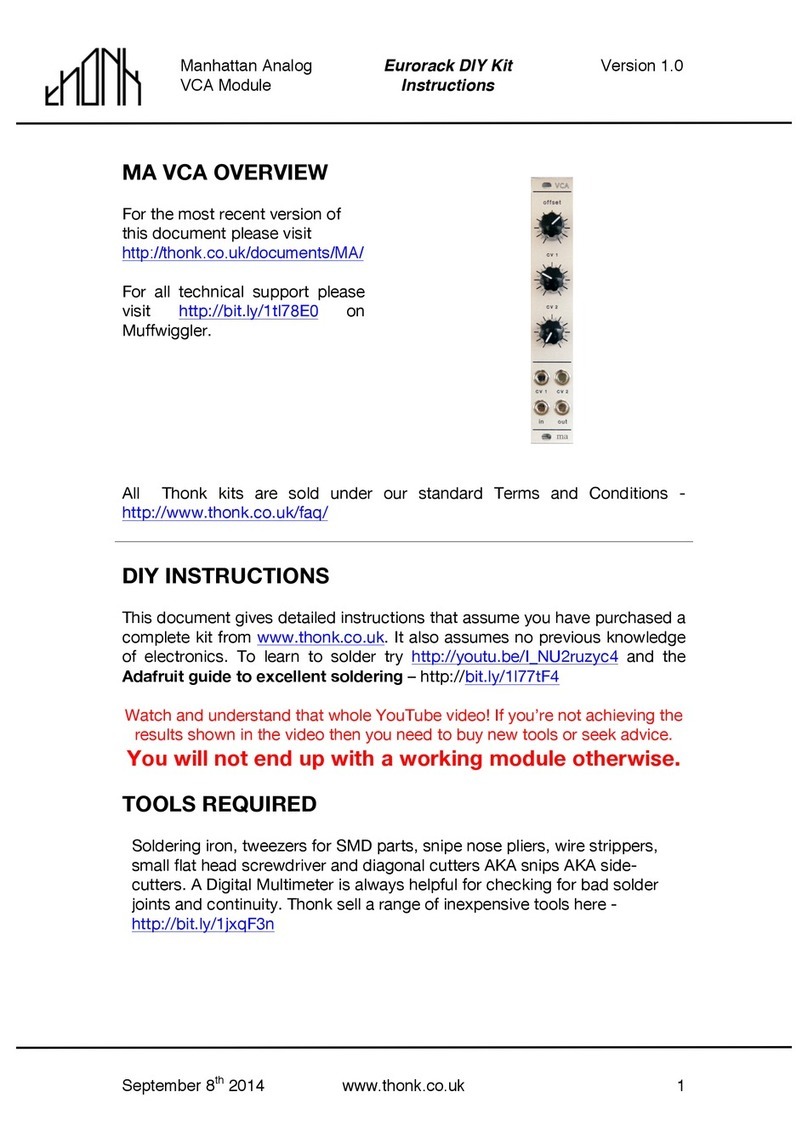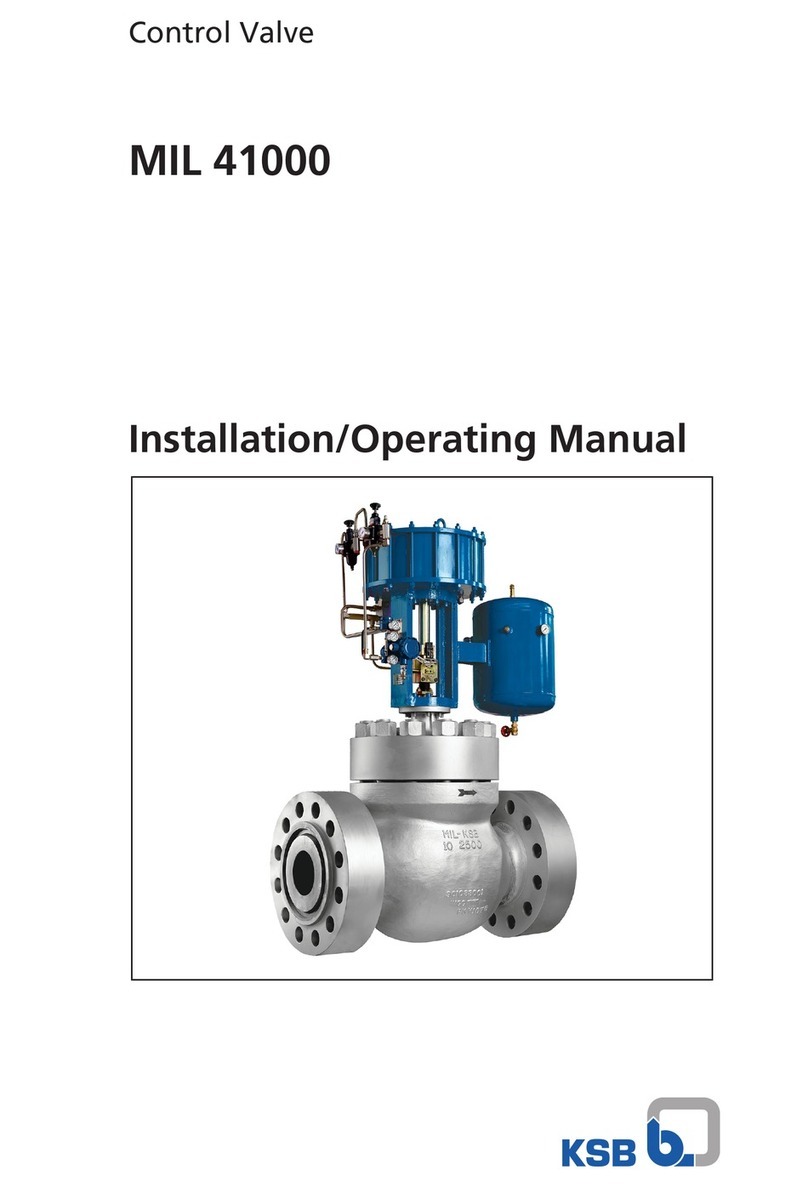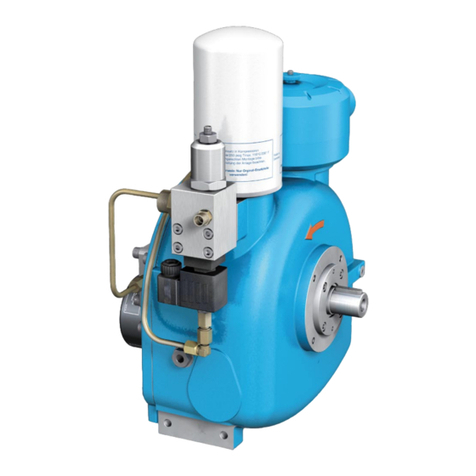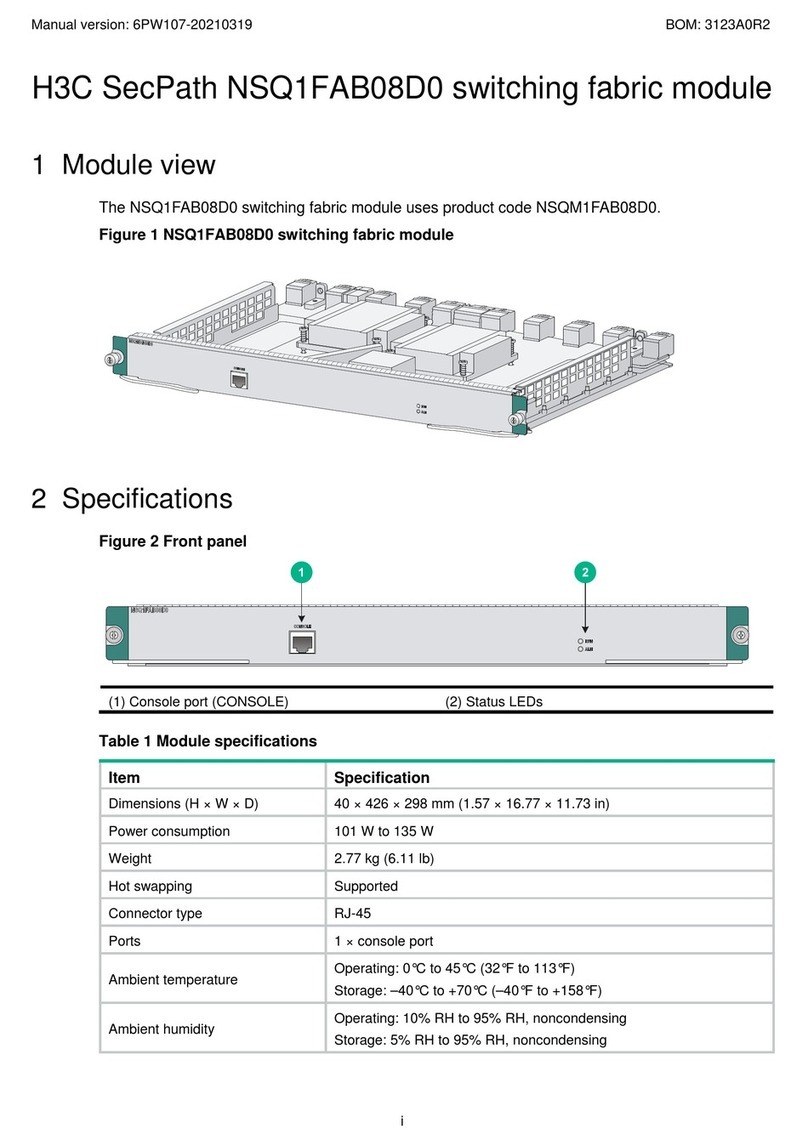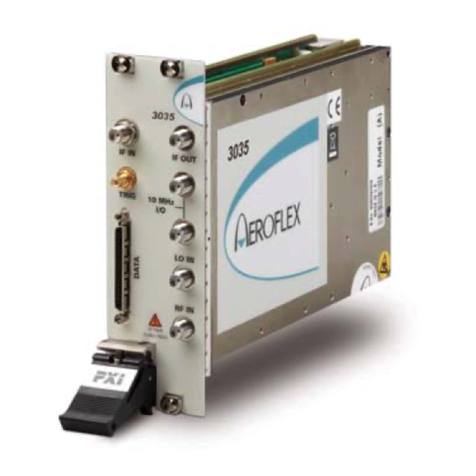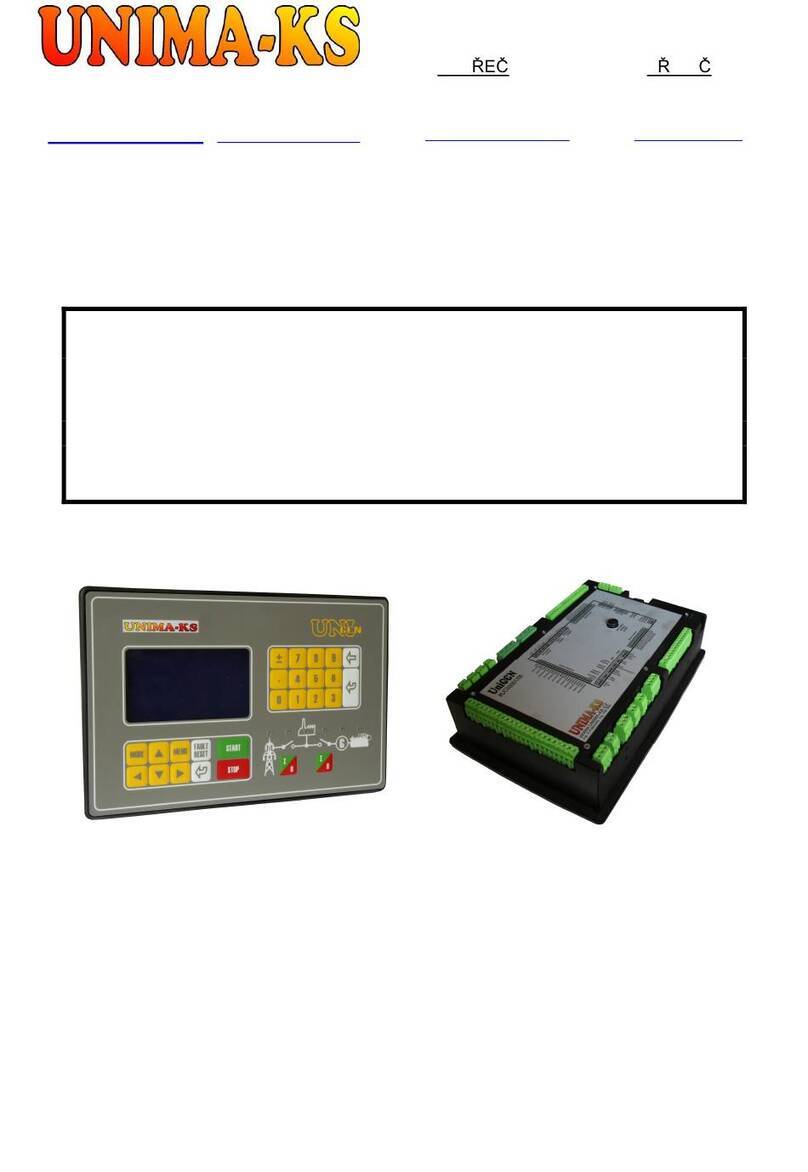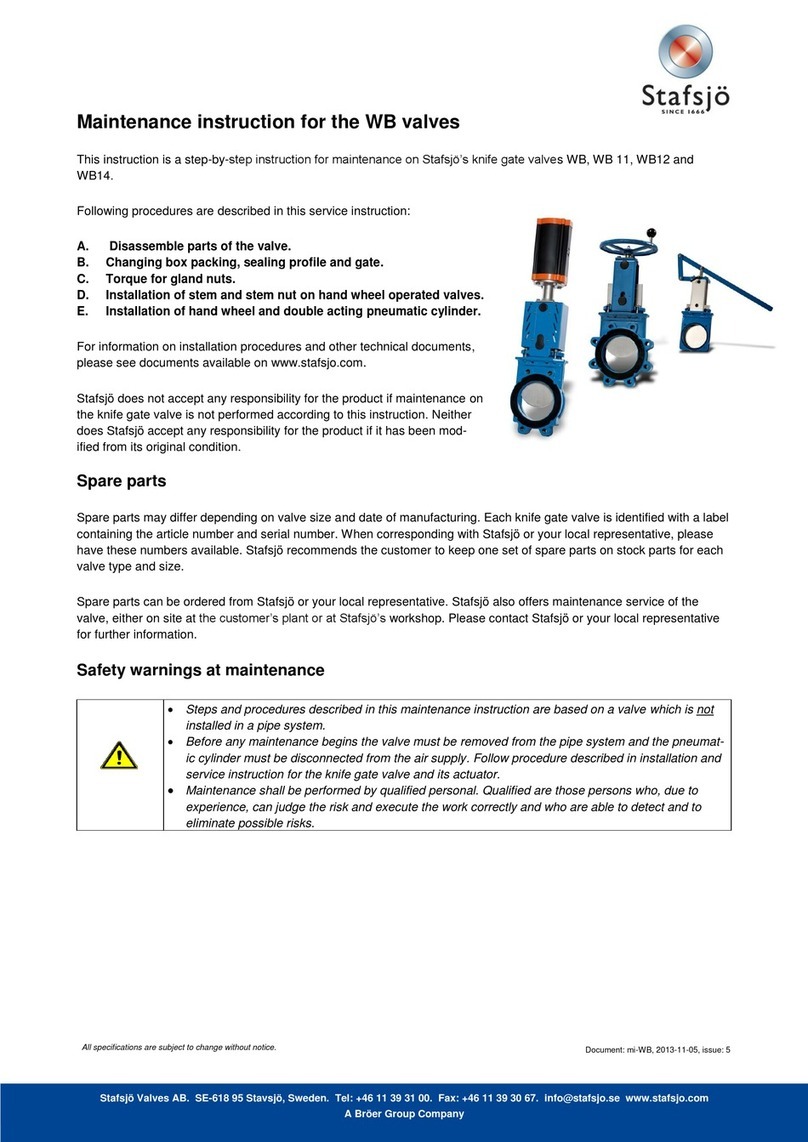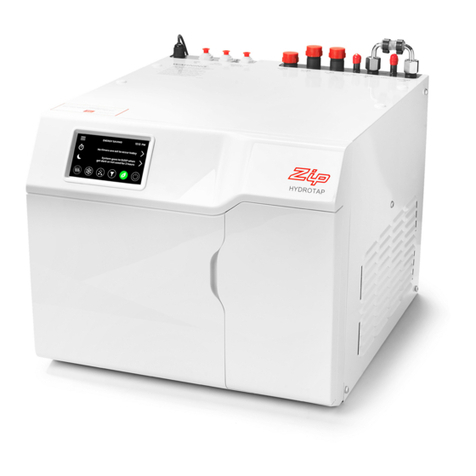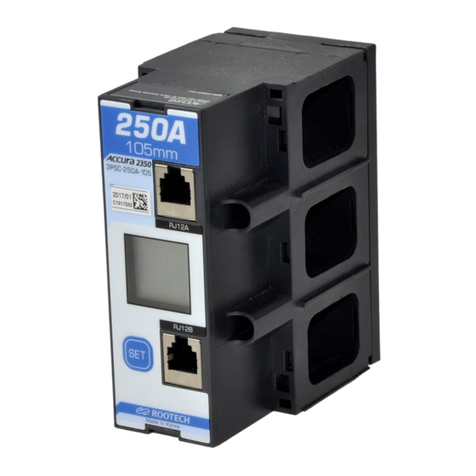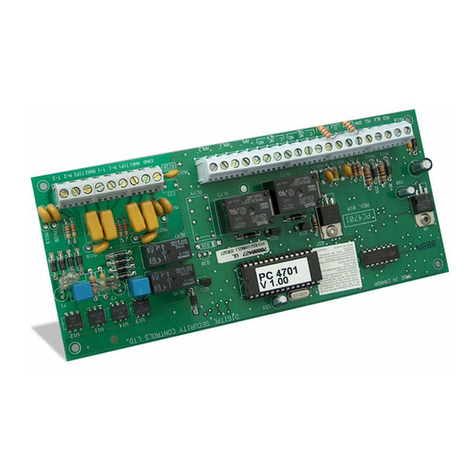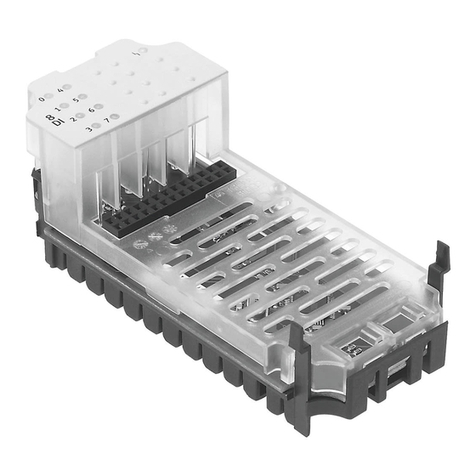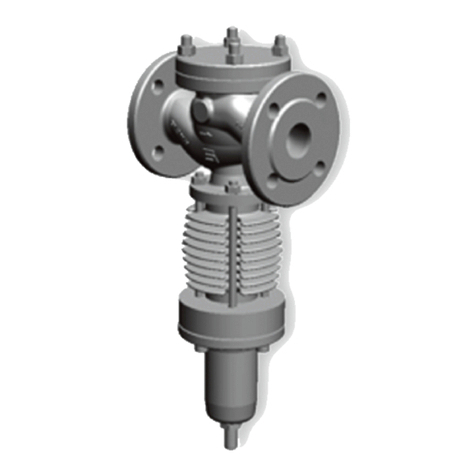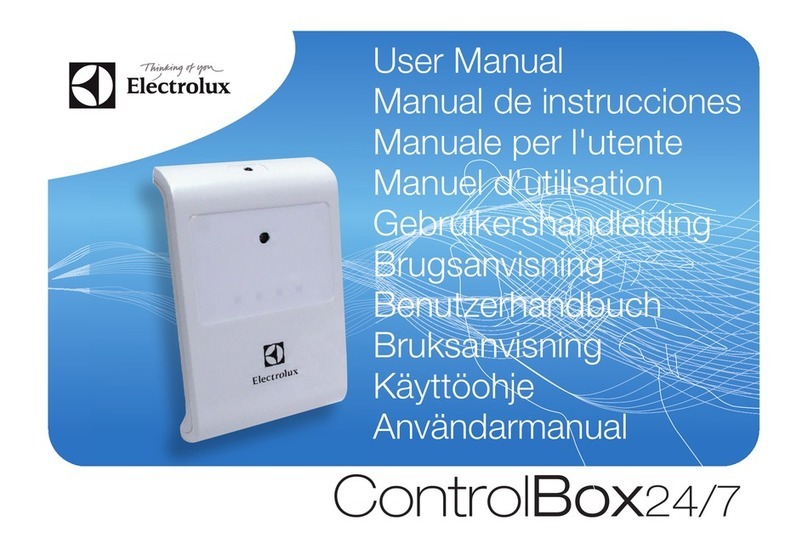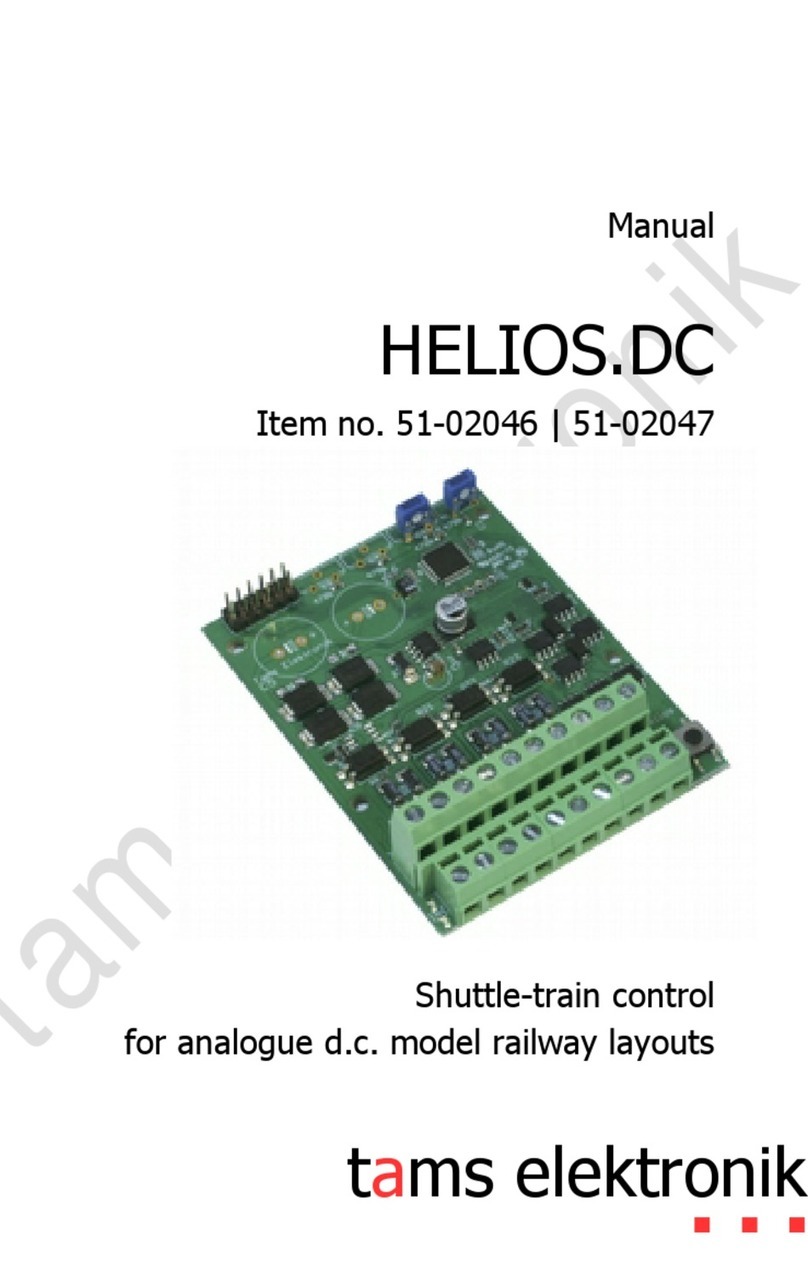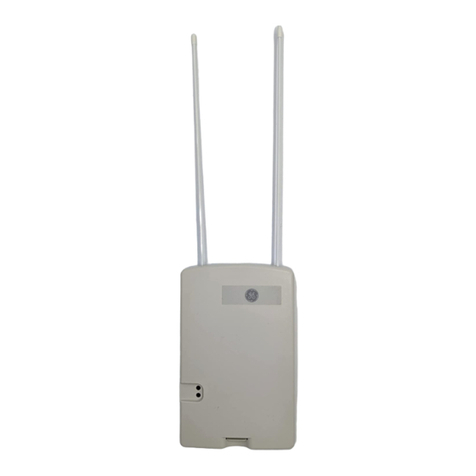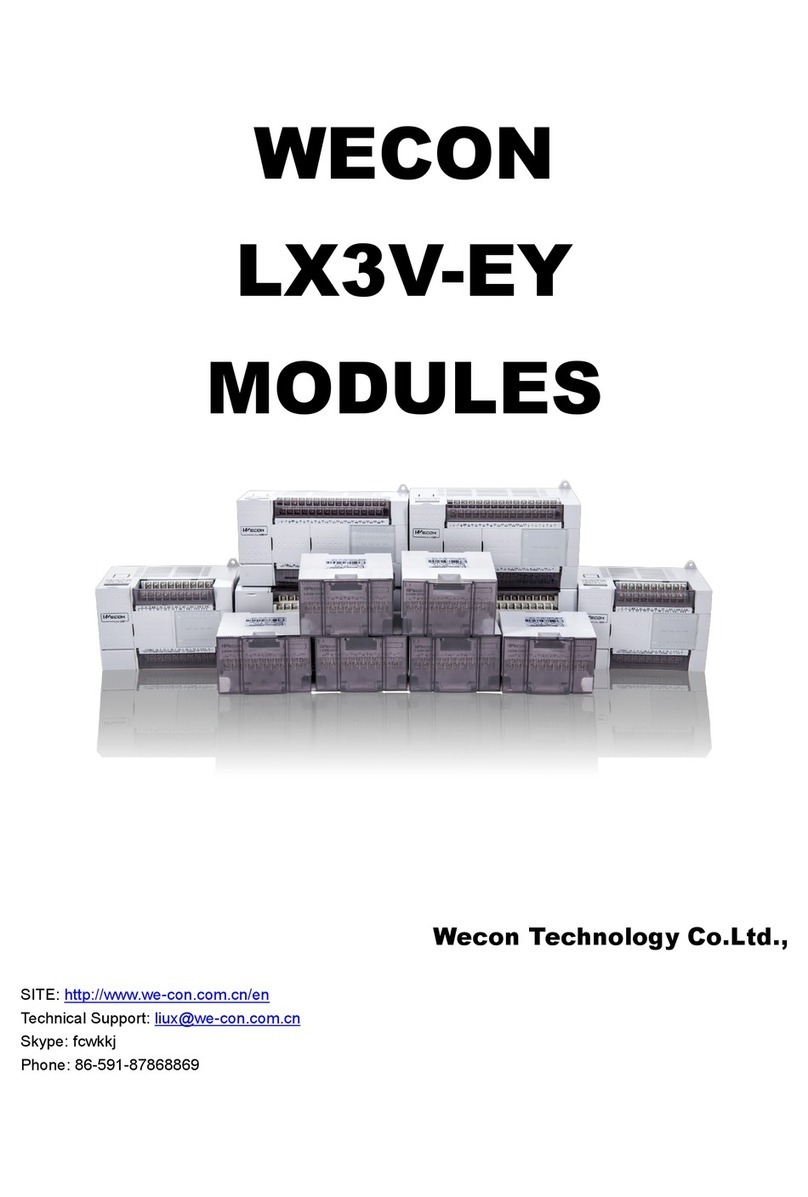Thonk Spring Reverb User manual

!
!
October 25th 2013 www.thonk.co.uk 1
Music Thing Modular
Spring Reverb Module
Eurorack DIY Kit
Instructions
Version 0.9
OVERVIEW
For the most recent version of this
document please visit
http://thonk.co.uk/documents/springreverb/
For all technical support please visit
http://bit.ly/196uq9j on Muffwiggler.
This document must be read in conjunction
with the Music Thing Modular user manual
http://bit.ly/197HL0U
All Thonk kits are sold under our standard Terms and Conditions -
http://www.thonk.co.uk/faq/
DIY INSTRUCTIONS
This document gives detailed instructions that assume you have purchased a
complete kit from www.thonk.co.uk. It also assumes no previous knowledge
of electronics. To learn to solder try http://youtu.be/I_NU2ruzyc4 and the
Adafruit guide to excellent soldering – http://bit.ly/1l77tF4!
Watch and understand that whole YouTube video! If you’re not achieving the
results shown in the video then you need to buy new tools or seek advice.
You will not end up with a working module otherwise.
TOOLS REQUIRED
Soldering iron, snipe nose pliers, wire strippers, small flat head screwdriver
and diagonal cutters AKA snips AKA side-cutters. A Digital Multimeter is
always helpful for checking for bad solder joints and continuity. Thonk sell a
range of inexpensive tools here - http://bit.ly/1jxqF3n

!
!
October 25th 2013 www.thonk.co.uk 2
Music Thing Modular
Spring Reverb Module
Eurorack DIY Kit
Instructions
Version 0.9
SOLDER JOINTS
Your solder joints should look like those shown as ‘OK’ below, they should
have that neat conical shape on BOTH sides of the PCB. If they don’t look
the same on both sides then stop! Work out why from the soldering guides
linked and don’t continue until you are getting those results.
This isn’t just OCD talking, you are very likely to end up with a destroyed,
damaged or defective unit if you’re not hitting that standard.
This photo is from the Adafruit guide to excellent soldering -
http://bit.ly/1jxqF3n and is reproduced under an Attribution-Sharealike
creative commons license - http://creativecommons.org/licenses/by-sa/3.0/

!
!
October 25th 2013 www.thonk.co.uk 3
Music Thing Modular
Spring Reverb Module
Eurorack DIY Kit
Instructions
Version 0.9
SPRING REVERB BUILD INSTRUCTIONS
1.
Start by emptying the Resistors and
Capacitors bag into one bowl or
container and the Main Bag into
another. This makes it much easier to
pick parts as you need them and
you’re less likely to lose anything.
2.
Start with the front PCB as pictured.
The first job is to solder all the
resistors that are positioned
horizontally. These are:
•1k x1
•2.2k x3
•6.8k x2
•10k x1
•47K x1 (R7 – value not marked)
•100k x4
10K
6.8K
2.2K
47K
1K
2.2K
2.2K
6.8K
100K

!
!
October 25th 2013 www.thonk.co.uk 4
Music Thing Modular
Spring Reverb Module
Eurorack DIY Kit
Instructions
Version 0.9
3.
Next solder the four 100n capacitors.
They come in a strip of 8 parts and
are Dark Yellow in colour rather than
blue as shown in the PCB image.
4.
Next solder the single 1nf capacitor in
the position shown.
5.
Next solder the single 22pf capacitor
in the position shown.
6.
Next solder the two large red 33nf
capacitors in the positions shown.

!
!
October 25th 2013 www.thonk.co.uk 5
Music Thing Modular
Spring Reverb Module
Eurorack DIY Kit
Instructions
Version 0.9
7.
Take the protective pink ESD bag
with yellow sticker out of the main
bag and find the 2N3904 transistor.
The middle lead needs to be bent
slightly towards the semi-circular face
of the transistor body, the component
should sit in a ‘tripod’ configuration
on the three leads.
NOTE! Do not solder the 78L05
voltage regulator into this position!
Apart from the text marking it looks
identical.
NOTE! Do not heat this part
excessively or you will damage it,
you should be aiming to solder
quickly and neatly.
8.
Next take the Vactrol from the Main
Bag and solder into place as shown.
The orientation of the 4 pins is vital.
The Vactrol should be completely flat
to the top surface of the PCB and sit
within the boundary of the PCB.
NOTE! Do not heat this part
excessively or you will damage it, you
should be aiming to solder quickly
and neatly.
9.
If you use organic solder that can be
washed with water then now is the
perfect time to do that. Make sure
you leave your PCB to dry in a warm
place for at least 30 minutes before
progressing further.

!
!
October 25th 2013 www.thonk.co.uk 6
Music Thing Modular
Spring Reverb Module
Eurorack DIY Kit
Instructions
Version 0.9
10.
Next you should solder in the 8 pin
and 14 pin IC sockets. Make sure
these sockets are soldered flush and
perpendicular to the PCB surface.
__________________________________
Then solder the 4 remaining vertically
positioned resistors:
•10K x1
•47K x2
•100K x1
Solder each pair of vertical resistors
so they are in a mirrored
configuration. This removes the
chance of them hitting each other and
shorting.
11.
Now flip the board over and solder
the one of the four 10uF Electrolytic
Capacitors into place.
NOTE! Orientation is vital on this part.
The grey stripe should be positioned
as shown and the longer lead of the
component should go into the hole
marked + on the PCB.
100K
10K
47K
Notch!
Notch!

!
!
October 25th 2013 www.thonk.co.uk 7
Music Thing Modular
Spring Reverb Module
Eurorack DIY Kit
Instructions
Version 0.9
12.
Next solder the 5 pin female socket
into position.
13.
Next you need to make a small
modification to the 3 pots. You need
to snap, cut or file off the small metal
tag that protrudes from the top
surface of the pot body as indicated.
The easiest way is to snap off with
pliers, it comes off very easily. If you
cut or file it off be careful not to
damage the thread on the shaft.
14.
Next you need to make a small
modification to two of the four 3.5mm
jacks sockets.
You need to cut off a small section on
one side of the grounded metal
shroud that surrounds the plastic
body of the jack. Do not cut off any of
the other tabs of metal.
If you don’t have anything you can
cut these with you can also just bend
this small section away from the body
of the jack.
NOTE! This is done otherwise it is
possible (although not 100%) that a
short circuit is made with the wiring
pads that sit at the very end of the
PCB. These wiring pads are not used
in this build.

!
!
October 25th 2013 www.thonk.co.uk 8
Music Thing Modular
Spring Reverb Module
Eurorack DIY Kit
Instructions
Version 0.9
15.
Next position the four jacks and three
pots and single LED in place on the
board but DO NOT SOLDER any of
them yet.
The LED is in the pink ESD bag with
yellow sticker. It won’t actually stand
upright from the PCB as shown in the
image yet, it’ll just drop down.
NOTE! Ensure the the longer lead on
the LED goes into the square hole
marked with a +
DO NOT SOLDER YET!
16.
Put the three plastic washers on the
pot shafts.
Ensure black face of
the jack faces this way
B50K
B10K
LED
Modified Jacks
(step 13)

!
!
October 25th 2013 www.thonk.co.uk 9
Music Thing Modular
Spring Reverb Module
Eurorack DIY Kit
Instructions
Version 0.9
17.
You didn’t solder the pots and jacks
yet did you? Good!
Put the faceplate on (White PCB
material or Aluminium) and tighten a
few nuts on to make sure everything
is sitting true and flat.
Now solder the pots and jacks (not
the LED yet, and make sure it doesn’t
fall out in the process). There are 5
solder points per pot and 4 solder
points per jack. 31 solder joints in
total.
NOTE! It’s easy to accidentally miss a
joint at this point, so I advise double
checking the 31 joints again after
you’ve finished
18.
The LED should still be loose. Push it
up through the hole in the panel and it
should hold in place. Solder it.
Remove the front panel again. Be
careful to not bend the LED as it’s
quite exposed now.

!
!
October 25th 2013 www.thonk.co.uk 10
Music Thing Modular
Spring Reverb Module
Eurorack DIY Kit
Instructions
Version 0.9
19.
Go back to the ESD bag and take out
the TL074CN and NE5532P IC’s.
In order to fit them into the IC sockets
you need to bend the pins inward
slightly.
Do this with a pair of pliers, or If
you’re careful you can bend each row
manually on the top of table.
The pins ideally should be
perpendicular to the body of the IC.
Fit the IC’s in the positions shown.
NOTE! You will wreck the IC’s and
possibly other components if you
power up with them in backwards.
NOTE, the below image is ROTATED
compared to previous images.
You have finished with this PCB for now,
it’s time to switch to the other one.
Notch!
Notch!

!
!
October 25th 2013 www.thonk.co.uk 11
Music Thing Modular
Spring Reverb Module
Eurorack DIY Kit
Instructions
Version 0.9
20.
First solder all the resistors on the
PCB. There are no vertical resistors
on this PCB.
21.
Solder the single 10n capacitor into
place at C3 (in labeled bag.)
21.
Solder the single 2.2n capacitor into
place at C9 (in labeled bag.)
22.
Solder the remaining four 100n
capacitors (originally on the
cardboard strip of eight, you soldered
the other four on the other PCB).
Remember that while they are shown
as blue in the image to the right, the
ones supplied with the kit are dark
yellow.
2.2K
22K
2.2K
68K
10K
10K
4.7K
22R
22K

!
!
October 25th 2013 www.thonk.co.uk 12
Music Thing Modular
Spring Reverb Module
Eurorack DIY Kit
Instructions
Version 0.9
23.
Now solder the single 22uF
Electrolytic capacitor into place at
position C8.
NOTE! Orientation is vital on this part.
The grey stripe should be positioned
as shown and the shorter lead of the
component should go into the hole
marked ‘-‘ on the PCB.
24.
Solder the three remaining 10uF
Electrolytic capacitors into place at
positions C2, C14 and C17.
NOTE! Orientation is vital on this part.
The grey stripe should be positioned
as shown and the shorter lead of the
component should go into the hole
marked ‘-‘ on the PCB.!
25.
Take the protective pink ESD bag
with yellow sticker out of the main
bag and find the 78L05 voltage
regulator.
The middle lead needs to be bent
slightly towards the semi-circular face
of the transistor body, the component
should sit in a ‘tripod’ configuration
on the three leads.
NOTE! Do not solder the 2N3904
voltage regulator into this position!
Apart from the text marking it looks
identical.
NOTE! Do not heat this part
excessively or you will damage it,
you should be aiming to solder
quickly and neatly.

!
!
October 25th 2013 www.thonk.co.uk 13
Music Thing Modular
Spring Reverb Module
Eurorack DIY Kit
Instructions
Version 0.9
26.
Solder the yellow fuses and the two
black diodes into place.
NOTE! Take care with the orientation
of the silver ends of the diodes which
match the thick white stripes on the
silkscreen.
NOTE! Do not heat the diodes
excessively or you will damage them,
you should be aiming to solder
quickly and neatly.
27.
Next solder the 5 pin header into
place.
28.
Solder the ten pin power header and
three pin reverb selection header into
place on the other side of the board.
Do not solder with the shunt in place,
place it on the header after the 3 pin
header has cooled. (The shunt
supplied might be black).
Set the shunt to ‘Spring’ to use an
external spring tank or ‘Brick’ for the
digital brick.

!
!
October 25th 2013 www.thonk.co.uk 14
Music Thing Modular
Spring Reverb Module
Eurorack DIY Kit
Instructions
Version 0.9
If you use organic solder that can be
washed with water then now is a
good time to do that. Make sure you
leave your PCB to dry in a warm
place for at least 30 minutes before
progressing further.
NOTE! If you wash the board, put
the shunt somewhere safely first.
29.
Solder the blue multi-turn trimmer
into place as shown.
30.
If you are using an accutronics digital
brick (optional) then solder this into
place now. The bricks are available in
different reverb tail lengths.
If you think you might want to switch
these out depending on taste then
you might want to use a 6 pin female
header (not included) instead of
soldering directly to the board.
NOTE! Do not heat the brick or
rework it excessively or you will
damage it, you should be aiming to
solder quickly and neatly.
31.
You can skip to step 32 if you have
the panel with RCAs on the front.
If you have a kit with rear RCA
connectors for the real spring tank
then these should be soldered now.

!
!
October 25th 2013 www.thonk.co.uk 15
Music Thing Modular
Spring Reverb Module
Eurorack DIY Kit
Instructions
Version 0.9
32.
Screw in the two brass hex spacers
into place. Make sure you use two of
the shorter machine screws, not the
two longer screws which are provided
to mount the finished module into
your case.
Now fit the two remaining TL072CP
ICs.
Make sure the circle on the top face
of the ICs are both at the end with the
notch in the IC socket.
NOTE! This spacer may cause the
C2 Electro Capacitor to lean over but
this shouldn’t cause a problem.
33.
Gently splay apart the two 100n
capacitors at the end of the PCB as
shown. The solitary 10uF capacitor
on the other PCB will nestle between
them once the two boards are
connected together.
NOTE! Don’t push them so far apart
that the leads touch the RCA socket
connections.
Notch
Notch
Circle
Circle

!
!
October 25th 2013 www.thonk.co.uk 16
Music Thing Modular
Spring Reverb Module
Eurorack DIY Kit
Instructions
Version 0.9
33.
It’s time to join the two PCB’s
together as shown, mating with the
male and female 5 pin headers in the
centre of each board.
Use the two remaining small machine
screws to secure the brass hex
spacers.
NOTE! Again make sure you don’t
use the two longer screws for the
front panel or it’ll be a boring job
taking it all apart again later on.
NOTE! Remember to take care of the
exposed LED, it bends easily.
34.
Put the three plastic washers back on
the pots and fully and finally affix the
front panel. 3 nuts on the pots and 4
nuts on the 3.5mm jacks sockets.
NOTE! Leave the knobs off until the
module is fully tested.
35.
If you have the Front panel with RCA
connections you need to follow these
steps, otherwise skip to section 37.
If you have the panel with the RCA
jacks on the front then fix them now.
The washers go on the front and the
grounding tags and nuts go on the
back.

!
!
October 25th 2013 www.thonk.co.uk 17
Music Thing Modular
Spring Reverb Module
Eurorack DIY Kit
Instructions
Version 0.9
Bend up the two ground rings so it’ll
be easier to solder wires to them. It’s
vital that the nuts are tight and that
the ground rings do NOT touch.
NOTE! If the ground rings touch then
the module will not work.
Once the nuts are secure and the
rings are apart they are unlikely to
touch each other again… but you
also have to make sure that they
don’t touch the metal shrouds on the
3.5mm jack sockets, OR protrude
down to a position where they can
touch the aluminium rail in your
synth case.
Donʼt let the
grounding ring
rotate below
this dotted line
Leave a gap!
Donʼt let the
grounding
ring touch
the jack
socket body
There is significant variation in Eurorack case mounting rails.
Take particular care with rails which donʼt have a lip which stops
the front panel moving vertically beyond a certain distance.
Even with a lip you may find that one or both nuts on the RCA
jacks can make contact with the Aluminium rail. This wonʼt
damage the module but it will stop the real spring reverb working.
You may want to consider putting thick insulating tape on the
inside edge of the case rail to stop this happening. It wonʼt be
visible once the module is screwed into place.

!
!
October 25th 2013 www.thonk.co.uk 18
Music Thing Modular
Spring Reverb Module
Eurorack DIY Kit
Instructions
Version 0.9
36.
Wire up the RCA jacks as shown.
You need to strip, twist and tin the
ends of the wires with a small amount
of solder. You need to do this neatly,
particularly the end that solders to the
PCB, or it won’t fit through the holes.
The wires shown in yellow go from
RTN_TIP and SND_TIP on the PCB
to holes at the tip of the main body of
the RCA jacks.
The wires shown in blue go from
RTN_RNG and SND_RNG on the
PCB to the grounding rings.

!
!
October 25th 2013 www.thonk.co.uk 19
Music Thing Modular
Spring Reverb Module
Eurorack DIY Kit
Instructions
Version 0.9
37.
The module is now complete. Affix
the power cable as shown with the
red stripe down.
38.
The trimming and calibration process is detailed in the Music Thing Modular
documentation linked below, if you don’t follow it you can easily end up with
a distorted reverb sound.
It also contains excellent instructions for general use, a guide to selecting
spring tanks and ideas for further modifications and expansion.
http://musicthing.co.uk/modular/wp-content/uploads/2013/10/Spring_2_1_Documentation.pdf
Table of contents
Other Thonk Control Unit manuals
